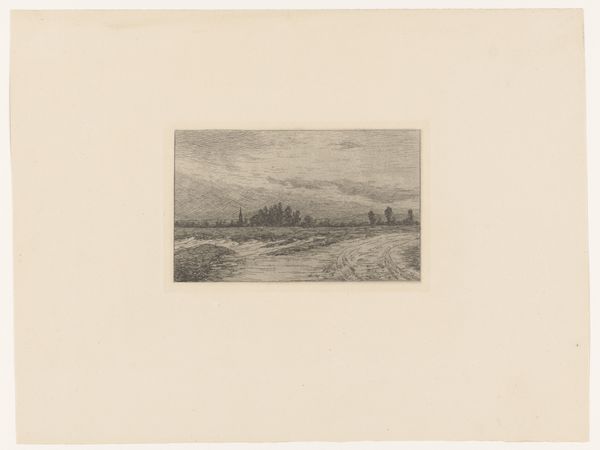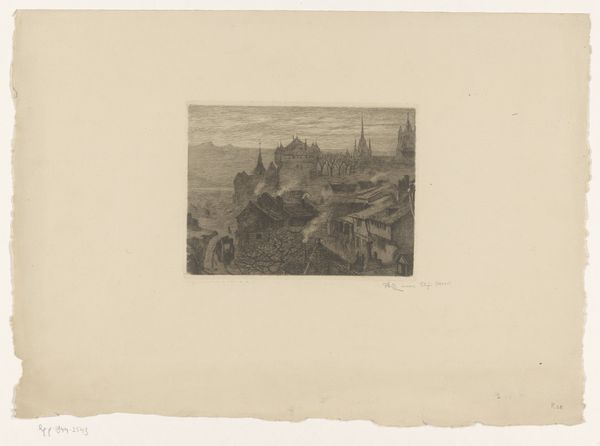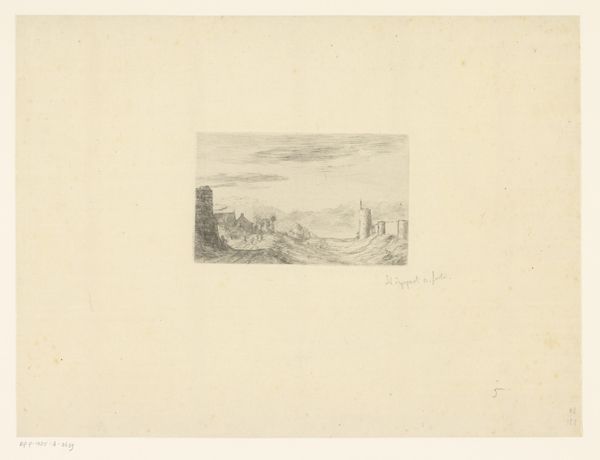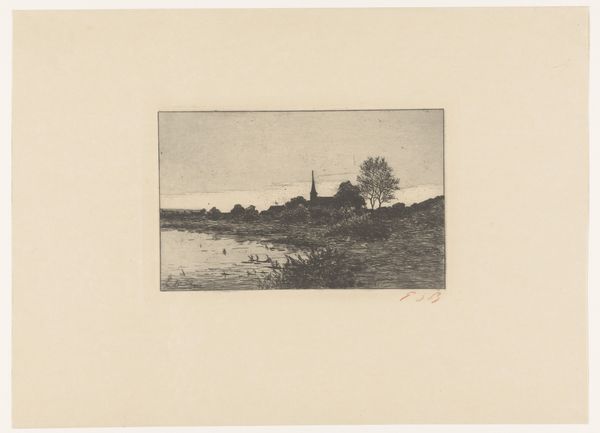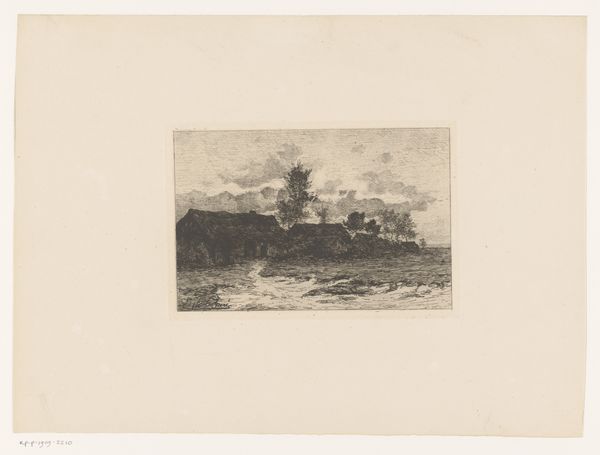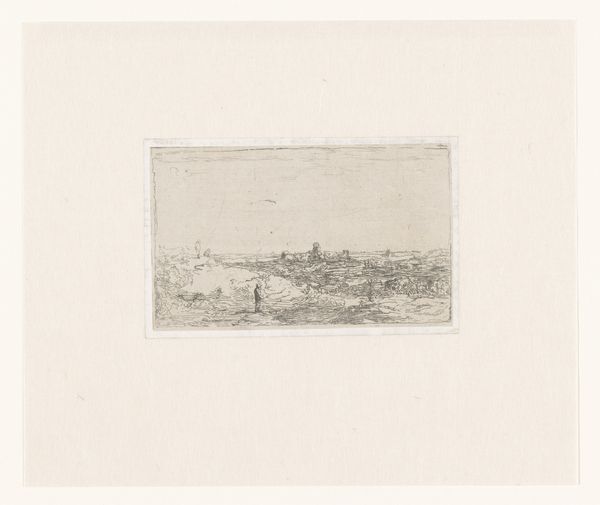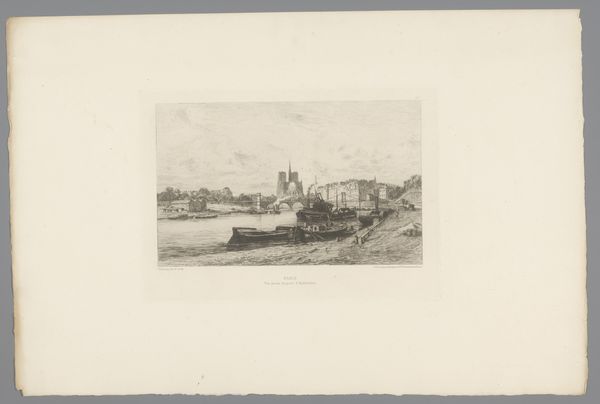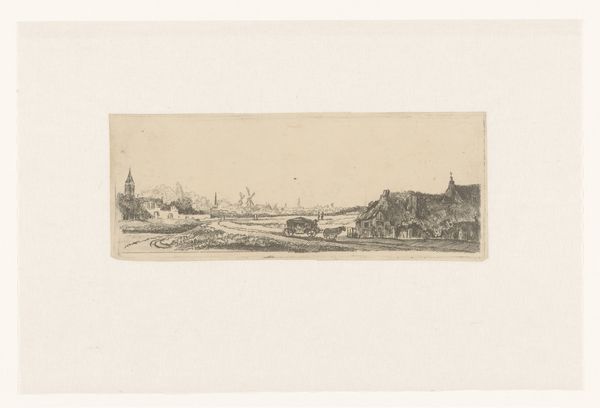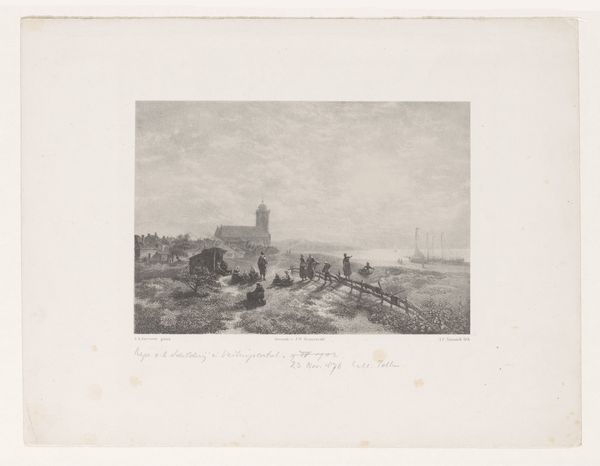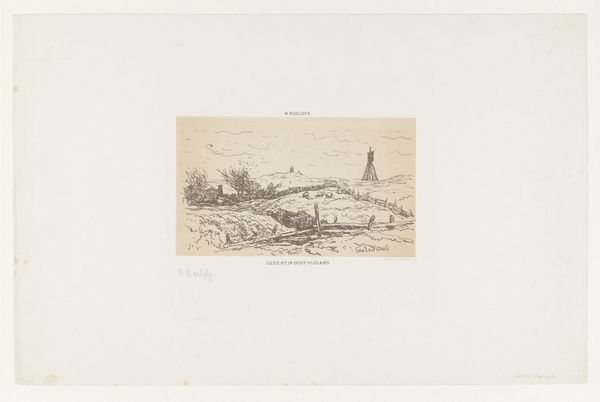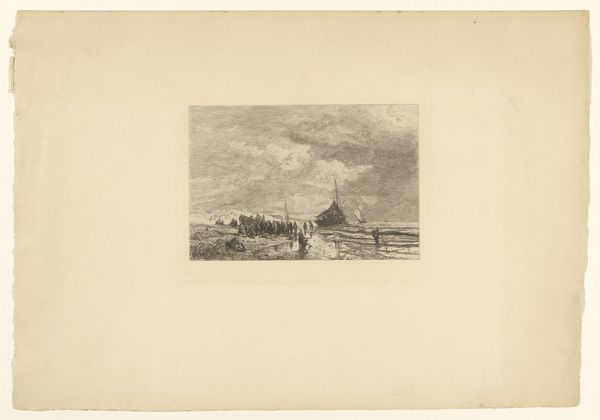
print, etching, paper
#
ink paper printed
# print
#
impressionism
#
etching
#
landscape
#
paper
Dimensions: height 135 mm, width 215 mm
Copyright: Rijks Museum: Open Domain
Curator: Welcome to this subtle etching, "Molens te Schaarbeek bij het vallen van de avond," or "Mills at Schaerbeek at nightfall," created around 1879-1880 by Jules Dieudonné. Editor: My immediate impression is of quietude, almost melancholy. The print's subdued tones and the subject—windmills at dusk—create a still and somewhat somber mood. Curator: Precisely. Notice how Dieudonné utilizes the etching technique to establish value—how shadow and light interact within the scene. There’s a tonal richness within what initially appears a monochromatic palette. Editor: I think that somberness resonates with the historical context. These windmills represent a way of life that was gradually being industrialized and displaced by the burgeoning factories in late 19th-century Belgium. There's a poignant undercurrent about the impending end of an era. Curator: Yes, but the piece moves beyond mere lament. See how the horizontal bands unify the work structurally, giving equal importance to land, windmills, and sky. There is something grounding about the balanced composition. Editor: But look closer—aren't those smokestacks in the distance? They're subtle, but to me, they suggest an intrusion upon this pastoral scene. It subtly reminds me of that moment when our present intrudes on memories and challenges idealized pasts. The rural landscape becomes an intersection for different historical narratives, including histories of colonialism. Windmills such as these ground grain from far away to feed working populations in Belgium and across Europe. Curator: That friction is certainly present, yes. The piece presents the rural within a society actively engaged in massive urbanization. Editor: Indeed. These windmills aren't merely picturesque structures; they're cultural landmarks grappling with the realities of progress and changing times. Curator: An era rendered as texture, light, and shade, offering viewers a lens into both industry and landscape, a subtle yet powerful social commentary through the close inspection of form. Editor: The way the artist situates that reality between an appreciation of pastoral and rural beauty, with industry lurking in the background. Curator: Beautifully said. Thank you for offering that layered perspective.
Comments
No comments
Be the first to comment and join the conversation on the ultimate creative platform.
